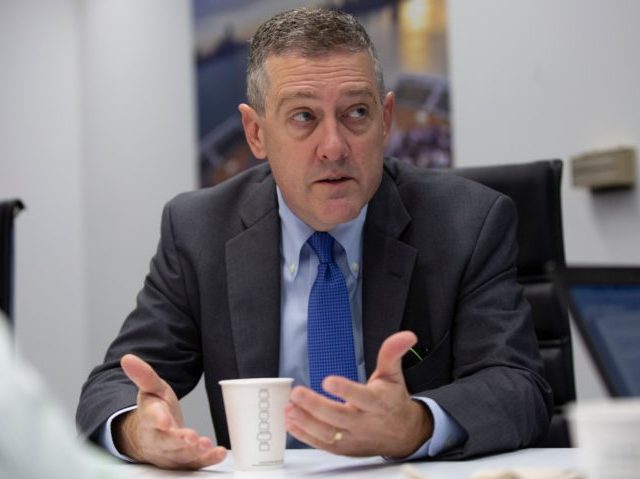Federal Reserve Bank of St. Louis President James Bullard said Thursday that he would like to see the central bank raise its target rate to 3.5 percent by the second half of this year.
“I do think we have to move forthrightly in order to get the policy rate up to the right level to deal with inflation that we’ve got in front of us,” Bullard said to reporters after a presentation at the University of Missouri-Columbia.
Bullard dissented from the Federal Open Market Committee’s decision last month to raise its target by a quarter of a percentage point. He would have preferred a half-a-point raise instead.
Bullard described inflation as “exceptionally high”and said it is comparable to inflation in 1974 and 1983. Standard monetary policy rules would prescribe a much higher interest rate than the 0.25 to 0.50 the Fed is currently targeting. Viewed from this perspective, the Fed is far “behind the curve,” Bullard said.
“However, all is not lost. Modern central banks are more credible than their 1970s counterparts and use forward guidance,” he said. “Credible forward guidance means market interest rates have increased substantially in advance of tangible Fed action. This provides another definition of ‘behind the curve,’ and the Fed is not as far behind based on this definition.”
Various Fed officials have voiced support for a half a point hike at the next meeting in early May. Minutes of the March meeting showed that members of the FOMC pulled back from supporting a rate hike of that size because of uncertainty around the economic impact of Russia’s invasion of Ukraine.
In his remarks to reporters, Bullard downplayed the risk of a recession.
“The expansion is not ‘old’ and can continue for a long time,” Bullard said. He also said that “labor markets are robust and are likely to improve further in 2022.”
He forecast that the economy would grow by 2.8 percent this year and unemployment could fall below three percent. On Thursday, the Department Labor said there were only 166,000 new claims for unemployment benefits last week, the lowest level of claims since 1968, when the size of the labor force was much smaller than it is now.
The yield curve, which inverted last week and raised fears that the economy might slump due to the Fed’s campaign against inflation, steepened on Thursday. By midday, 10-year Treasuries were yielding 2.65 percent and two-year Treasuries were yielding 2.464 percent.

COMMENTS
Please let us know if you're having issues with commenting.